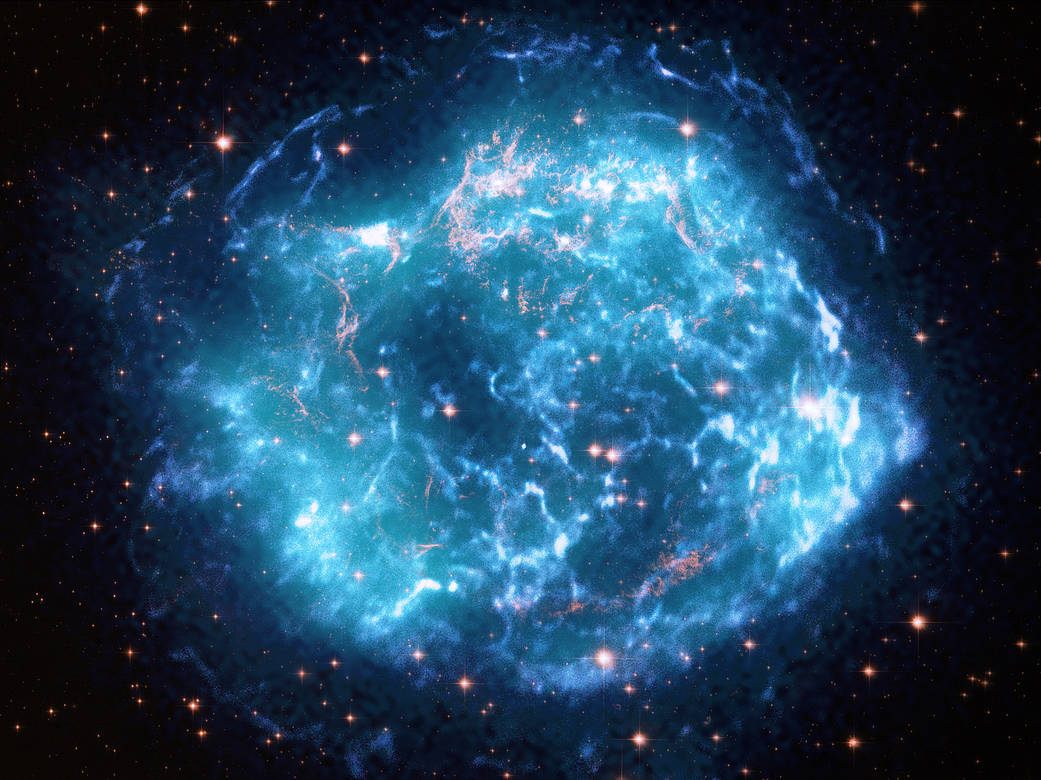
When a massive star collapsed in the Cassiopeia constellation, it generated a supernova explosion with some of the fastest shockwaves in the Milky Way. These speedy shock waves are one of the reasons the Cassiopeia A (Cas A) supernova remnant was chosen to be our Imaging X-ray Polarimetry Explorer’s (IXPE) first observed object.
This composite image, made of data from IXPE, the Chandra Observatory, and the Hubble Telescope, shows Cas A. IXPE’s investigation of Cas A from Jan. 11 to Jan. 29, 2022, added crucial information about the behavior of exploded stars’ magnetic fields: scientists found that the magnetic fields in X-rays tend to be aligned in radial, not perpendicular, directions. Polarization data also suggest that these X-rays come from turbulent regions with many different magnetic field directions.
Image Credits: X-ray: Chandra: NASA/CXC/SAO, IXPE: NASA/MSFC/J. Vink et al.; Optical: NASA/STScI

























